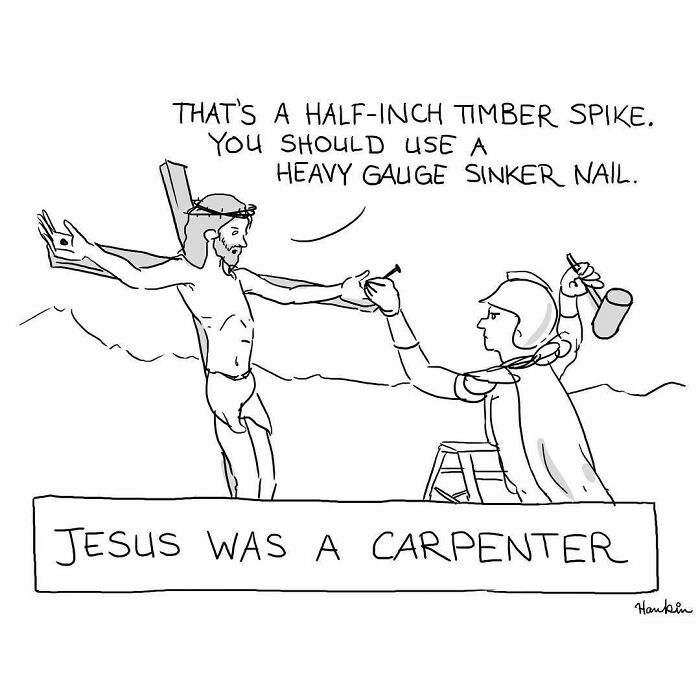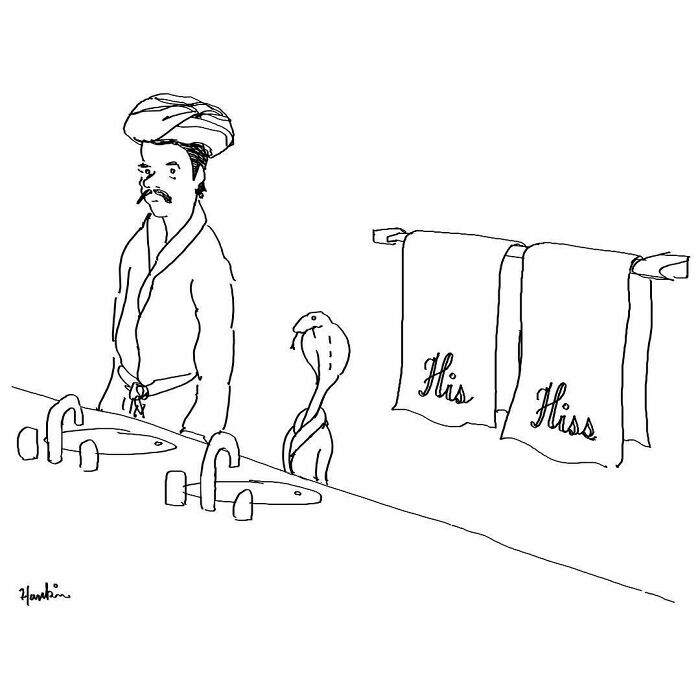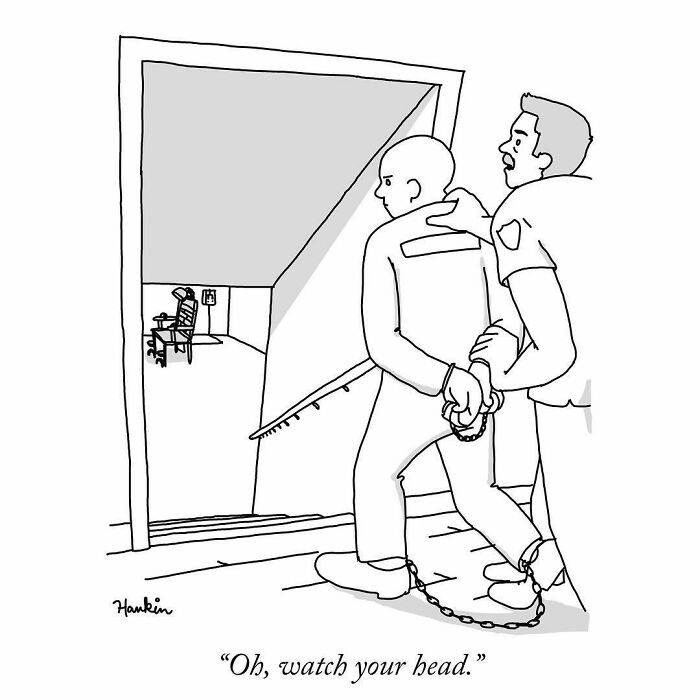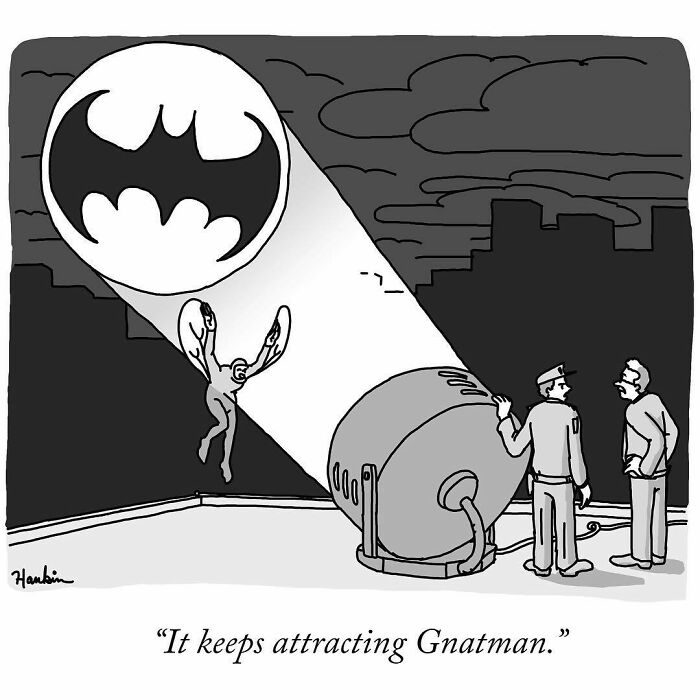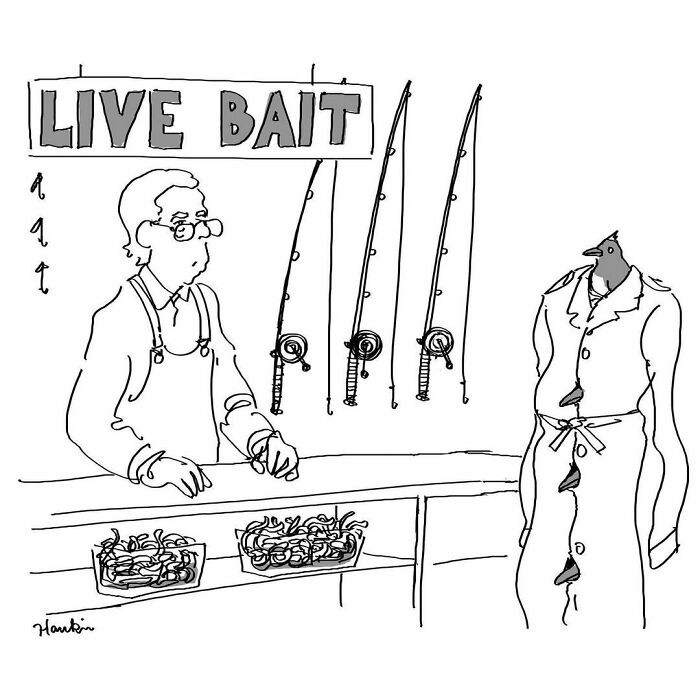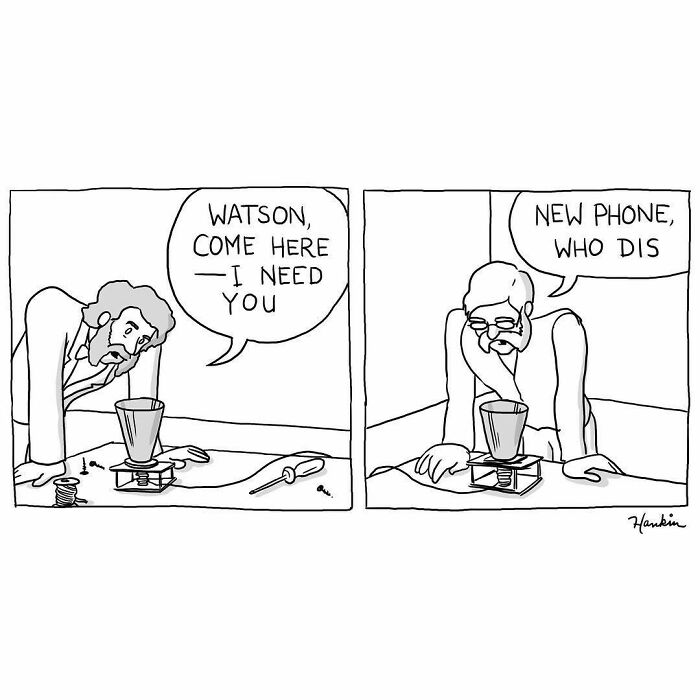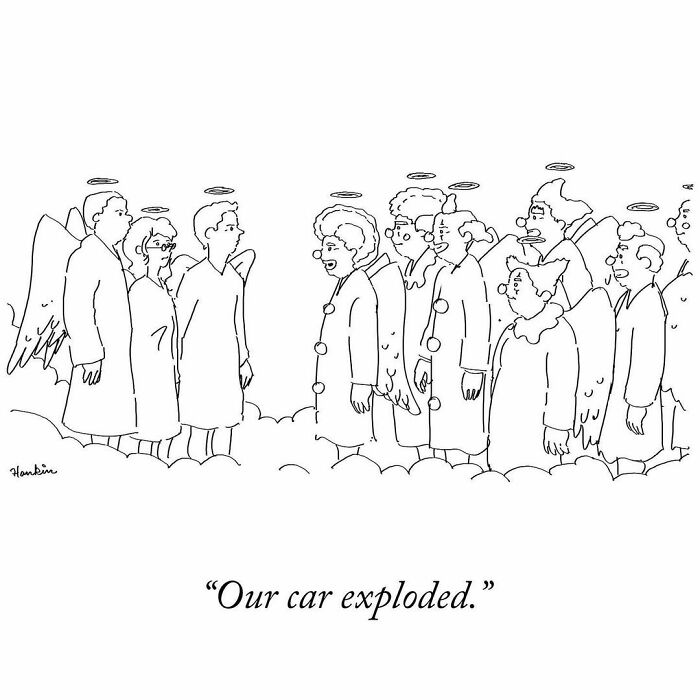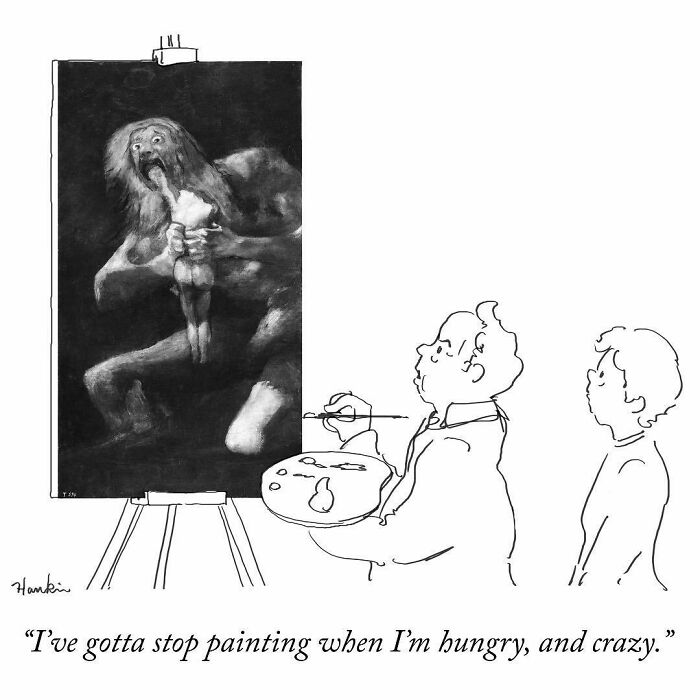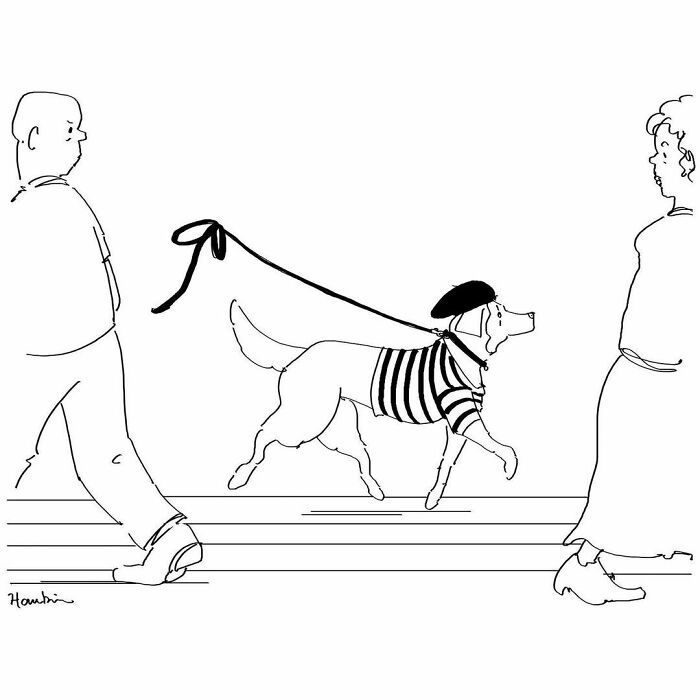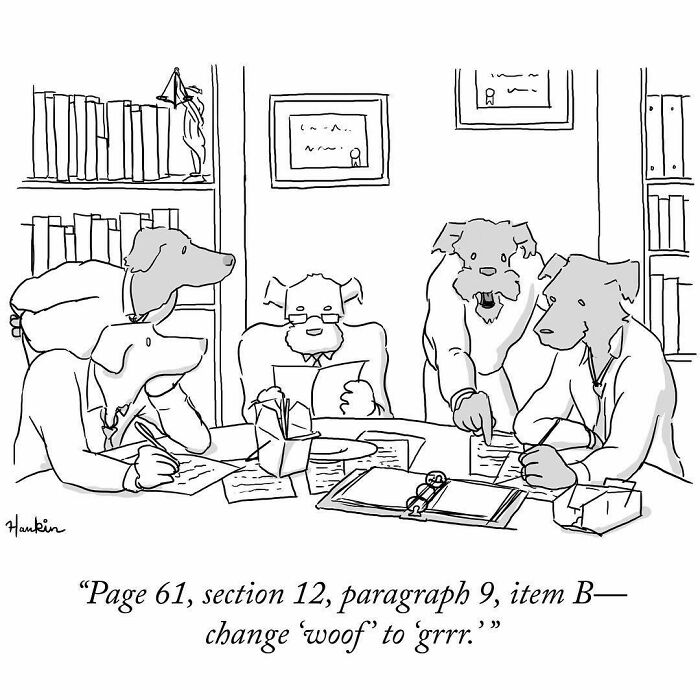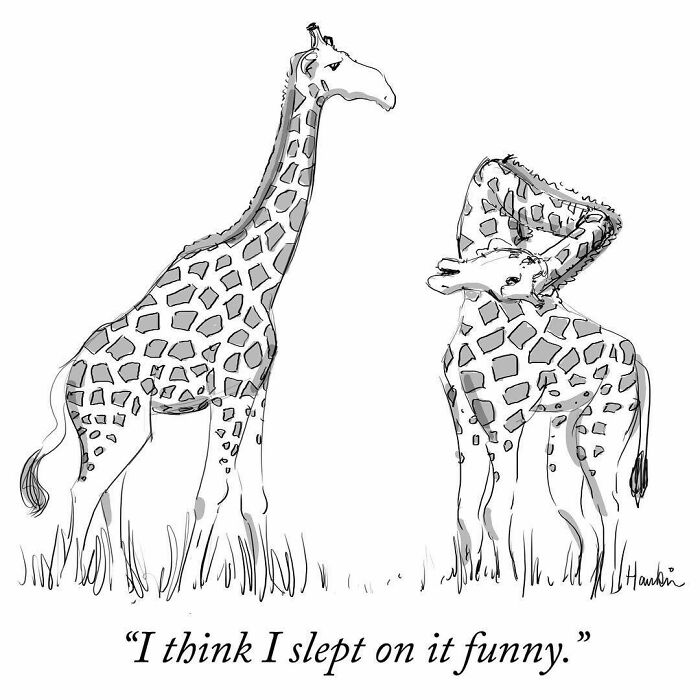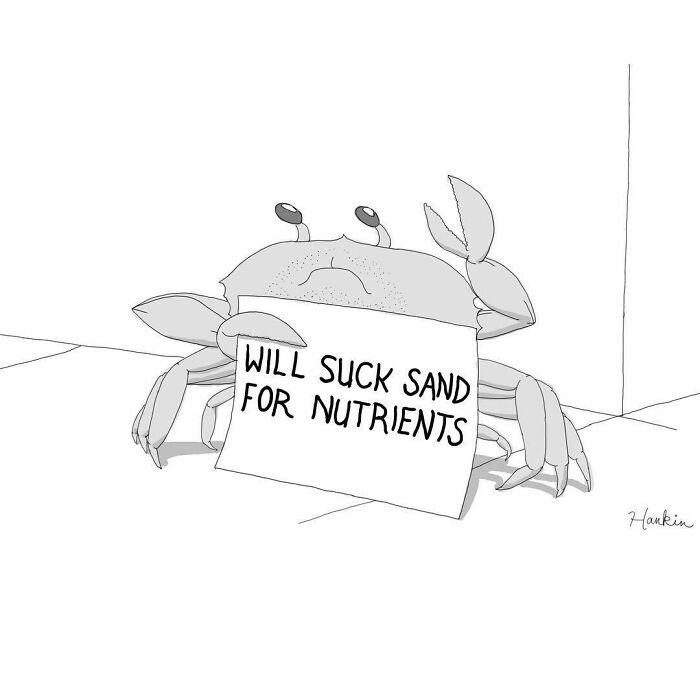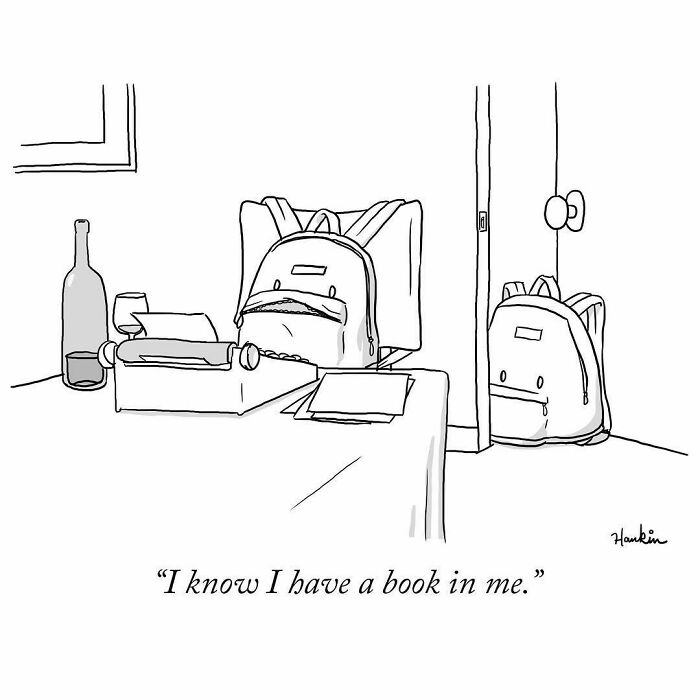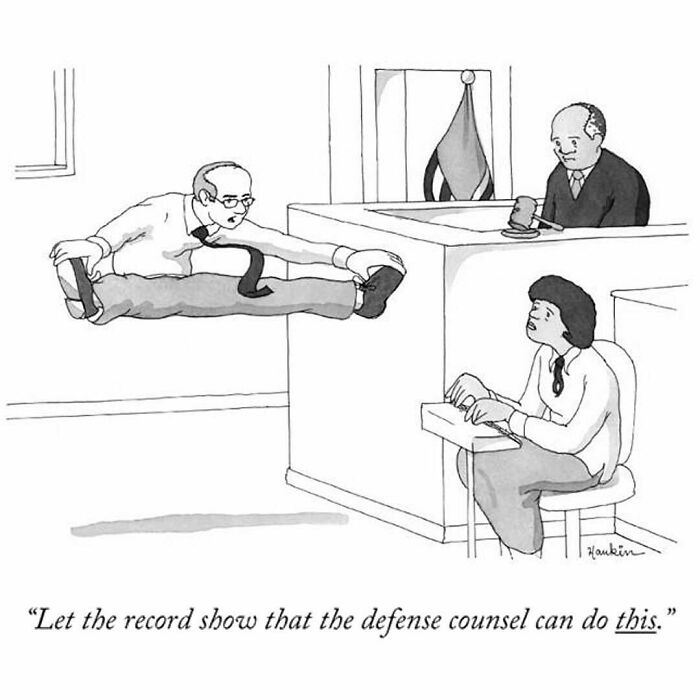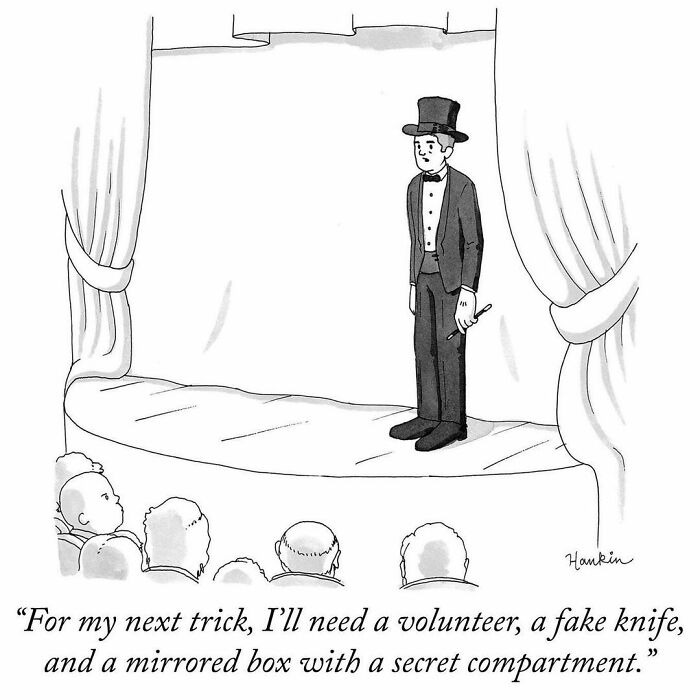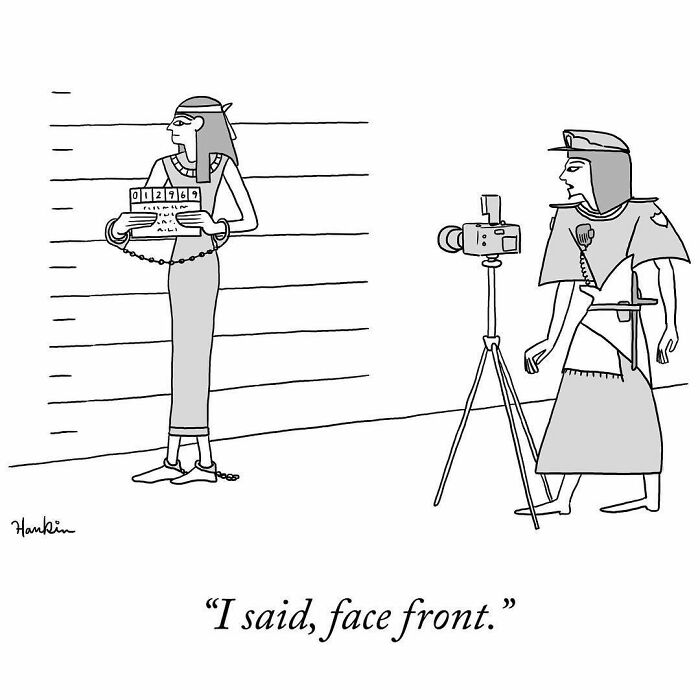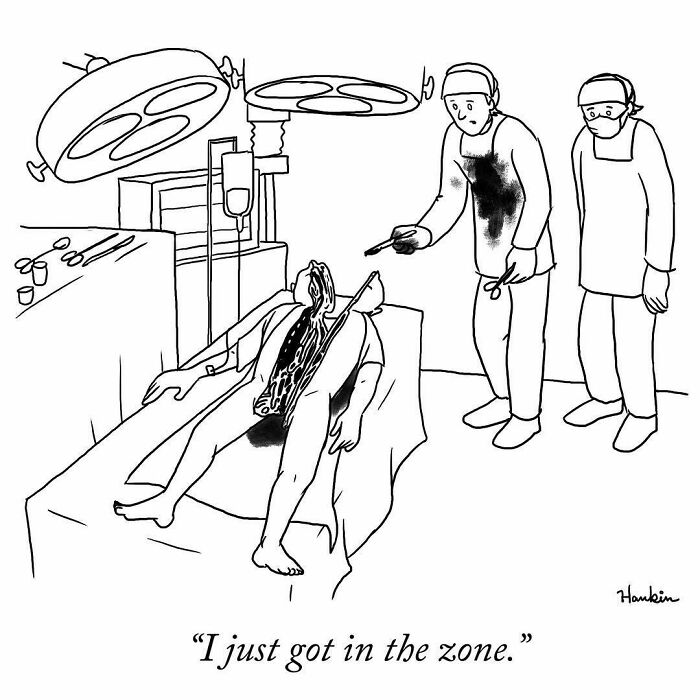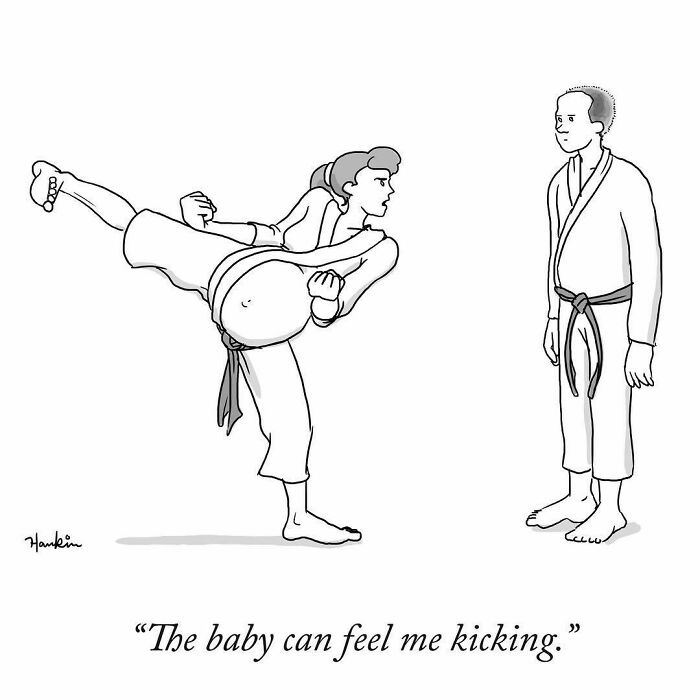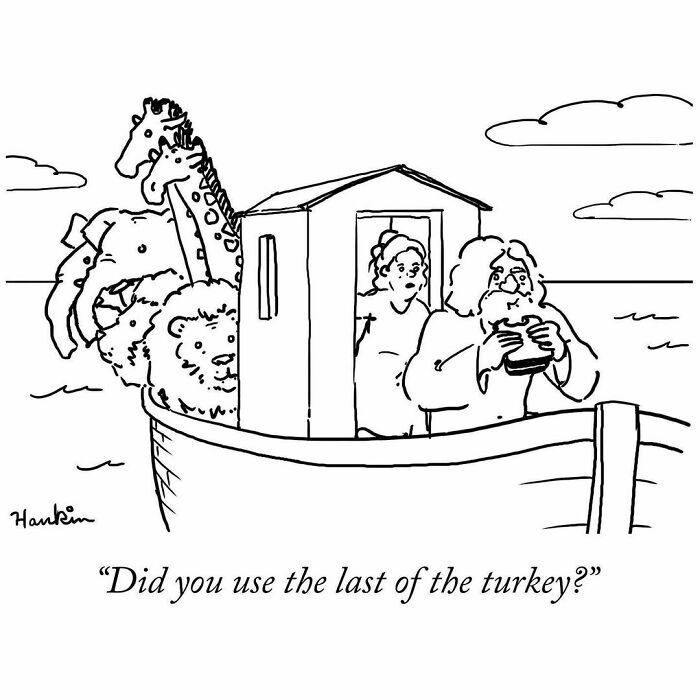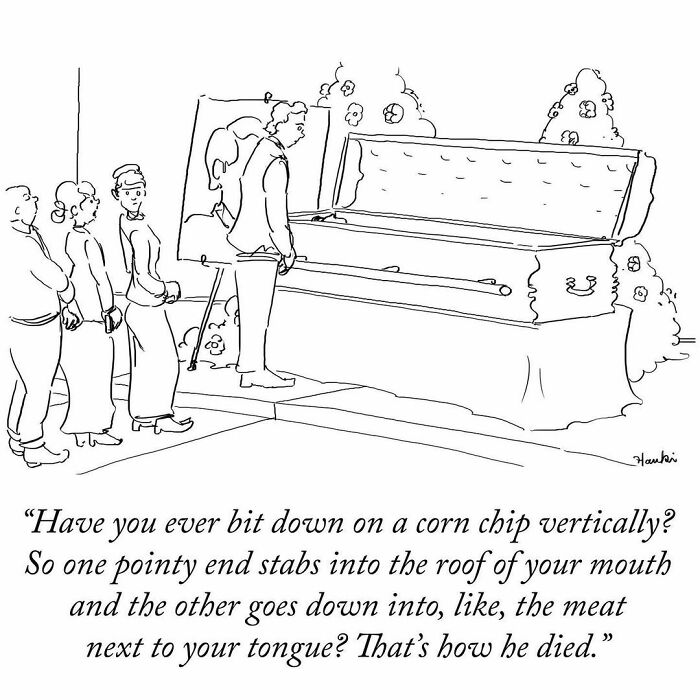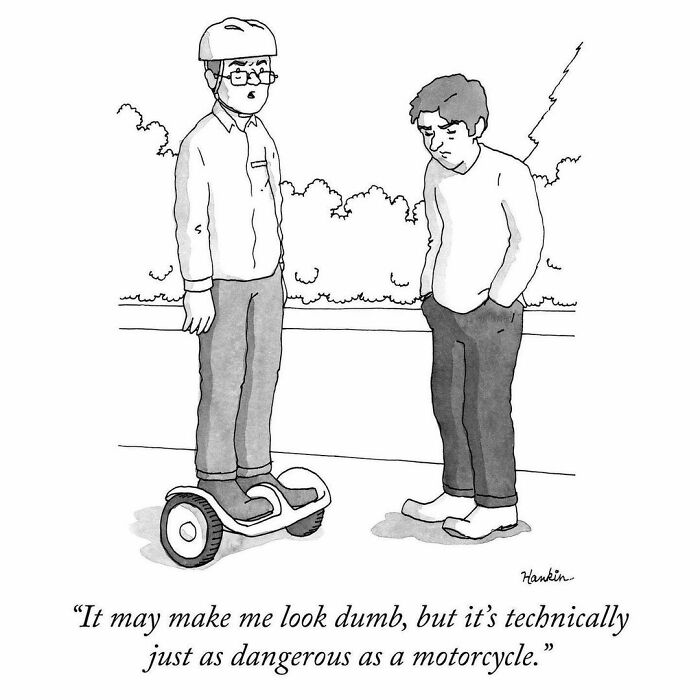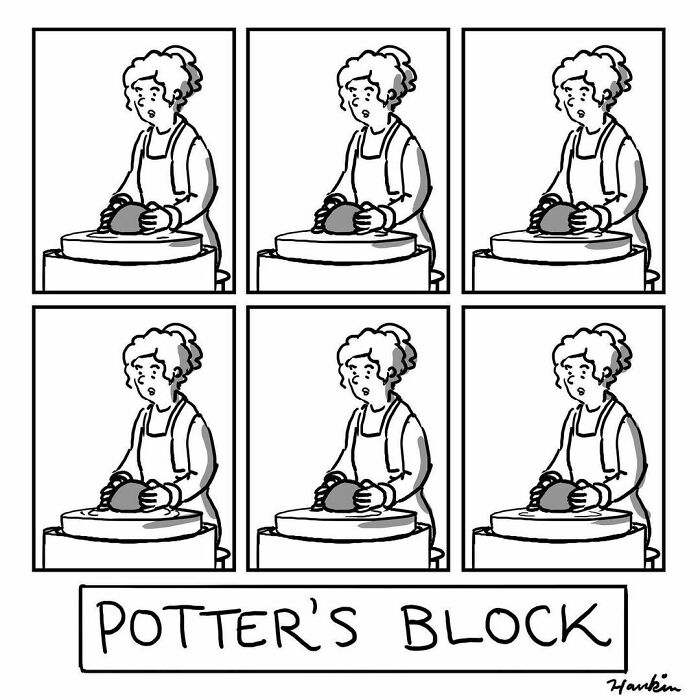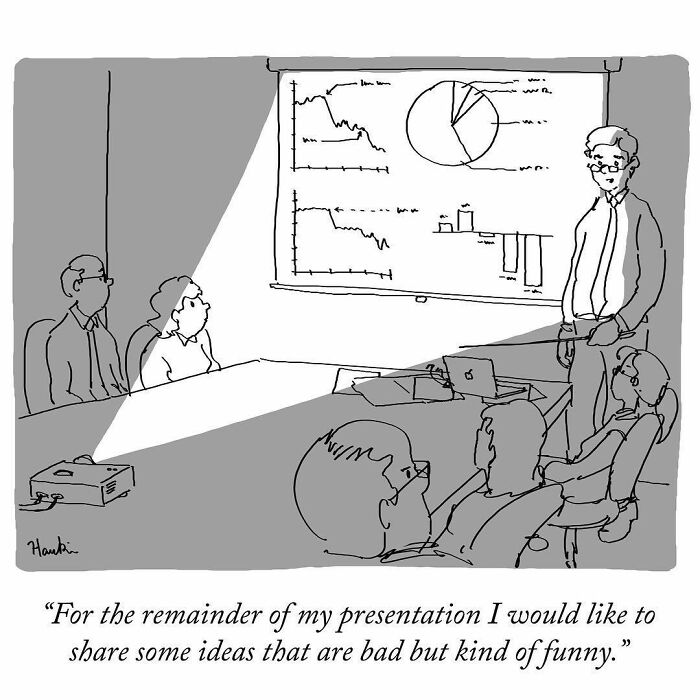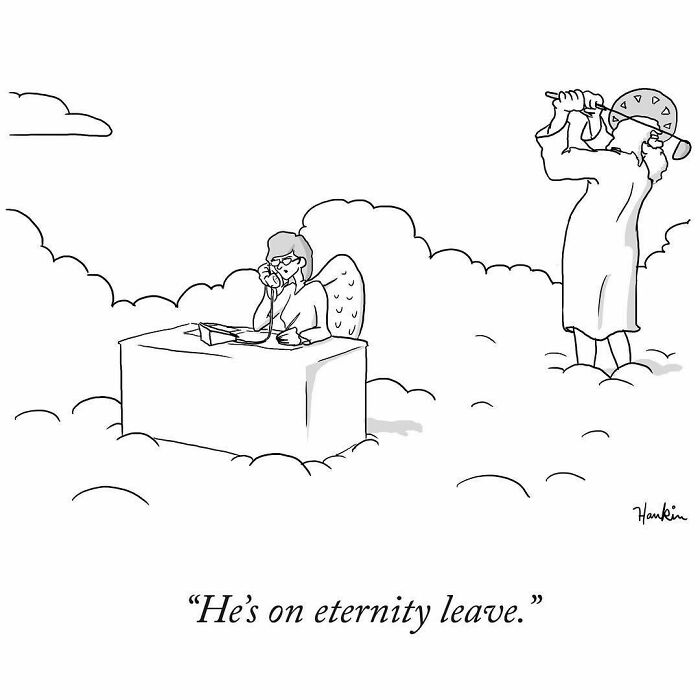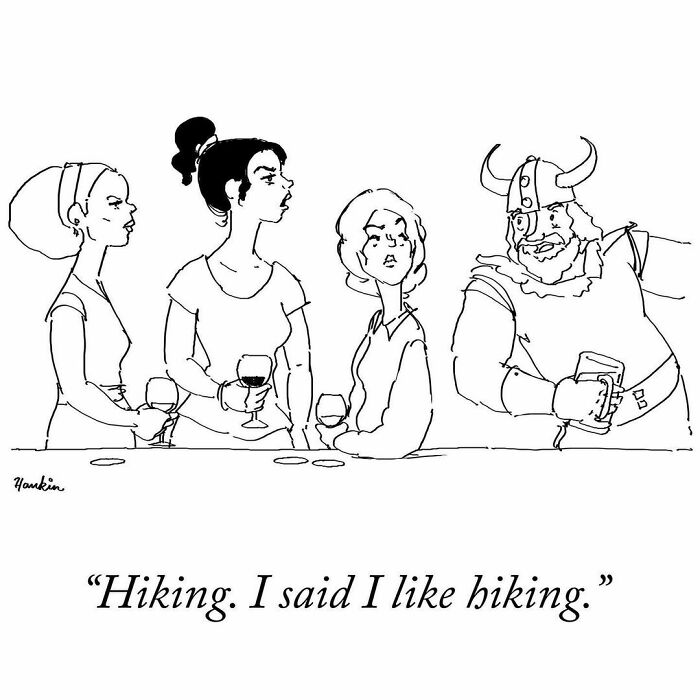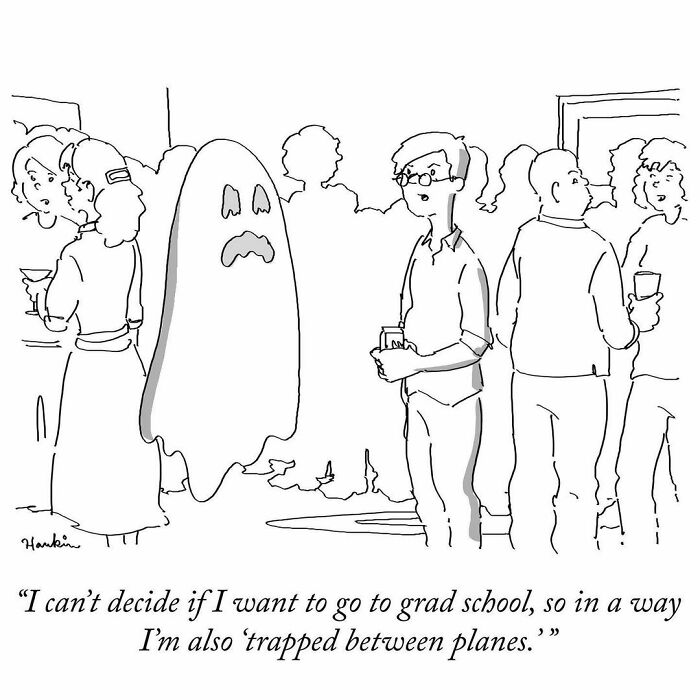How do you capture truth and remain authentic? How do you portray it in a way that's easily understandable, intuitive yet creative, and challenging? Answer these questions and you're a timeless artist.
Writer and cartoonist Charlie Hankin has. Or, if you want to remain critical, is about to.
Hankin creates single-frame comics that cut to the very core of being: everyday banality, profound realizations, (difficult) social dynamics, and character; all reveal themselves within his work.
His stories, however, remain open-ended. They challenge the reader to write the prologue and epilogue for themselves. Construct their own moral. So don't expect to just frantically scroll through and close the window a better person. You have to participate in creating these comics in order to get the most out of the experience. But believe me, that's the beauty of it.
More info: charliehankin.com | Instagram
This post may include affiliate links.
"I like humor that exists outside of space and time," Hankin told Bored Panda. "I don't riff on the news cycle, I don't pull inspiration from my immediate surroundings. Instead, my subjects are feelings—loneliness, embarrassment, boredom—and my references (when I make them at all) are broad and eternal: Greek mythology, fairy tales, the Bible. The goal is to induce people to see a familiar thing in a new way, and do it with a funny joke."
The artist said that working within a single frame demands clarity. After all, you have only one picture and one line of text to communicate your idea, so it has to be unambiguous and brief. "Take my 'I warned her not to get bangs' cartoon. I had to fit the setting, the action, and the actors into a teeny tiny square of space (on a phone screen, or in print in a magazine) so there's no room to waste space on inessential details. As for the caption, would it be funnier if it ended '...but she didn't listen to me?' Of course not," Hankin explained. "The medium favors restraint, and a succinct cartoon is a successful one."
On the other hand, it's really difficult to express the passage of time in a single panel. "In the foregoing example, a reader's eye ranges over the image from left to right, like text, so you can direct a reader's eye through the story elements in the proper order: pallbearers, during a funeral, with onlookers commenting. A similar principle applies for showing things unfolding in time, but it's a little clumsy to do in a single panel. When the passage of time is really essential for telling a joke, I will break an idea up into several panels. I did this recently in The New Yorker in this cartoon. Of course, when readers see something occupying multiple panels, they expect the narrative to evolve over the course of the comic, so it's fun to subvert that, too, which I did here."
Hankin thinks of the text and the visuals of a cartoon at the same time, but he always writes down his concepts in words before he sketches them, so he considers himself a text-based thinker.
Lithuanian music phenom Kabloonak once said that boredom is what really drives his ideas—once you get rid of all distractions and set aside some time to actively do nothing, the mind engages itself. Whether it's frightening or entertaining itself, just let it do its thing, and it can surprise you with interesting discoveries.
Hankin's idea-generating technique follows this principle as well. "My process involves sitting with a cup of coffee and a blank page open in my special notebook. I'll try to clear my mind, and eventually, boredom will make me fixate on a germ of an idea, a little incongruity worth exploring," he said. "Aliens... parking their UFO in a tow-away zone? Adam and Eve... parking their UFO in a tow-away zone? I'm kind of kidding here, but you get the gist—I come up with a lot of bad ideas until I land on an idea that is merely mediocre. Then I keep going. Amassing a bunch of hit-or-miss ideas means I can just keep the hits. When I have a collection of 10 hits, I sketch them digitally. If any of them sell to magazines, I do a more polished ink drawing." The published stuff as well as Hankin's personal favorites wind up on his Instagram.
The artist is really happy that he manages to grind out ideas and drawings even when he's feeling uninspired or lazy. It has been a wonderful boon to his creativity. "To some extent, you can turn creativity on and off like a faucet. This has been an important lesson in other jobs, like the one I'm doing right now, an animated series for cable TV. Stay tuned for that in 2021," he said, adding that gag cartooning is a microcosm of all the skills you need for comedy, illustration, and writing. "Be clear and concise; don't be satisfied with the low-hanging fruit; and keep going—even if your current idea stinks, the next one might not."
I hate Russian nesting dolls, they're so full of themselves.
I can see Poseidon the god of the sea in Greek mythology in the background with his trident
Mary: 'shouldn't he be in bed by now?' Joseph: 'I don't care, I'm not the bloody father'.
My dad, who's turned 69 this year, is learning English and yesterday he called me all proud and excited because he bought the owl some sort of tuxedo with his reward points or something. I was dying xD
Does he catch flies with tounge? Does he croack? Does he swimm breaststroke? So many questions...
This reminds of what a friend of mine said they would do if they turned invisible. They would go find a street mime and beat them to death. The applause the mime would get would be phenomenal.
Judge: “I’ve seen enough! Mr. Doe, this court finds you innocent. Case dismissed.”
Extra points for knowing the birds are Canada geese, not Canadian geese!!
Just in case you don't get this, it means doing 2km/h in a 1km/h zone.
"Yes. Look behind you." *smashes dude over head with Bucket of Parts™*
There's a lot of very clever plays on words here. I like this higher level humour.
These are genius, really inventive. Thebest thing on bp yet, by a long shot.
these are very reminiscent of the farside comics! they were super clever i really enjoyed them!
Yes! Also reminded me of Non-Sequitor. That and Far Side, pretty good company. Congrats to the cartoonist!
Load More Replies...There's a lot of very clever plays on words here. I like this higher level humour.
These are genius, really inventive. Thebest thing on bp yet, by a long shot.
these are very reminiscent of the farside comics! they were super clever i really enjoyed them!
Yes! Also reminded me of Non-Sequitor. That and Far Side, pretty good company. Congrats to the cartoonist!
Load More Replies...
 Dark Mode
Dark Mode 

 No fees, cancel anytime
No fees, cancel anytime 










